If you’ve read some of my stuff before, you might have seen a few pieces on Christianity and the Bible. Out of over a thousand posts, this will be the 180th in the “Christian” category. It ranks third behind “Cycling” and “Thoughts in Progress” (many of which overlap with Christianity). And you should expect a Christian slant from what I write. It’s who I am, by far more than a cyclist. The difference is, my work on Christianity usually uses a lot more brain power than my cycling posts. I mean, it doesn’t take much to write “Today’s ride was great…I saw something really cool,” and then post a bunch of pictures. Matters of greater import though? If they were easy, you’d surely see a lot more of them. Of what you get, though, I try to be as thoughtful as possible. I try not to use excessive Christian-speak. I try to see through the readers’ eyes because I want people to understand what I have to say. Sometimes it takes the long way around, and that takes a lot of words.
It takes a lot of study too. I listen to countless podcasts, lectures, and sermons — more so in the past because it’s getting harder to find a lot of good new stuff these days (although I still get in a few hours a week). I also read my Bible daily, usually with breakfast, making it one of the first things I do for the day. I established that habit early on in my Christian life when presented with a problem: I couldn’t find a way to read the Bible as much as I felt I should. This wasn’t some kind of legalistic limit. I just believed that as a Christian, I needed to thoroughly understand the source material. So I came up with a solution to which we all might want to pay some attention: When you think you don’t have enough time for something important, set the alarm a half-hour earlier and do it then. And I have. I’ve been an early riser since long before I was this old and long before my 4:30 AM rides. I made the conscious effort to get up that half-hour earlier in order to make time for my Bible over 20 years ago, and that’s stuck with me.
The Bible I read has changed too over that time. While the first Bible verse I read as a believer came out of my The Way Bible, given to me by my parents on my 18th birthday (I still have it), I quickly moved on to a cheap (yet more rigorously-translated) New International Version (NIV), which I read from cover-to-cover a couple of times until it started falling apart. Then a Study Bible — the Life Application Bible (NIV version) that I still love for its meaningful notes but only get to pull out when I’m teaching (an activity for which it works beautifully).
After that, I moved on to the English Standard Version (ESV), the general go-to translation used in many churches now where it’s replaced the NIV for those who want a more literal translation. [The NIV is considered something of a “thought-for-thought” translation (that is, the translator uses the text to explain what they believe is the accepted meaning instead of letting the words speak for themselves – e.g. when the word is literally “brothers,” they translate it “brothers and sisters.”)]. After exploring the various publications of the ESV, I settled on a more compact, single-column version that fits quite well in the hand.
More recently, I’ve come to love my ESV Reader’s Version, which is stripped down by removing all of the verse numbers and notes. This has been a good Bible for daily reading in that it keeps the distractions to a minimum, but still allows me to track my reading by chapter. It’s a Bible for when you don’t need to dig in detail for references and theological points; but rather just to read, enjoy, and reflect. This has been my breakfast Bible for some time now.
But I’ve found something new that I’m liking even better. The ESV has published an ESV Reader’s Bible in a multi-book format broken down by genre — a 6-volume set that is true to the original texts in that it has no chapters, verses, or other markings. It’s put together more like a standard novel on high-quality paper, and I love it. It contains all of the same words of the ESV text, but it reads differently — even from the simple Reader’s Version that I have used over the past several years. And the text and feel of it is easy on the eyes too.
Whenever I buy a new Bible, I have a running joke with a friend ask I say, “This is the last Bible I’m gonna buy!” (and if you think about it, we Americans face such a wealth of Bibles it’s almost embarrassing). I’ve told that joke a few times now because it seems there’s always something — like this new version. So here we go again, but this time…I mean it! I can’t see needing anything else. I’ve really got the whole gamut covered now; from complex and filled with cross-references, footnotes, and verse notes, to this — nothing but the text. And each has its uses. Still, we all know the best Bible out there is the one that you read (among the reliable translations).
I hope you can share some of the excitement in this. Put simply: read your Bible. It’s actually easier than you think. I like to compare it to when I first tried to run a mile (way back in my ignorant high school days). I measured out a course, then nearly died getting to its finish line. But I learned later in life that the best way to run a mile is to run farther than a mile, because not long after crossing the mile mark, it suddenly became easier. I just didn’t know it because I always stopped.
I know a lot of people, both Christian and non-Christian, who’ve tried to read the Bible, and maybe this applies to them too. They get through a few books, then give up. It’s too hard. It’s not making any sense. But I challenge you to go beyond that. If you have any curiosity at all about the Christian faith, read the Bible with an open mind. Try to understand its complex history and use of genres, then maybe after more than a few books, you start to get it. Having said that though, I have to admit that stamina in reading wasn’t my problem before I became a Christian. I literally didn’t get it back then, and it wasn’t until I became a Christian that I found the problem: “For the message of the cross is foolishness to those who are perishing, but to us who are being saved it is the power of God.” Still, I can only pray that if you do take the challenge, we can look more to what Paul says in his letter to the Romans: “faith comes from hearing the message, and the message is heard through the word about Christ.”
The Bible in its entirety is “the word about Christ.” Read it, and perhaps you will learn what I’m talking about…
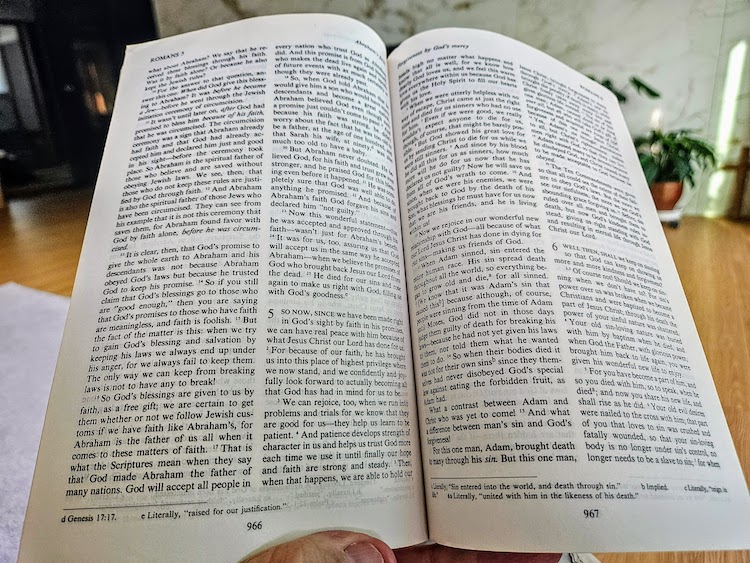
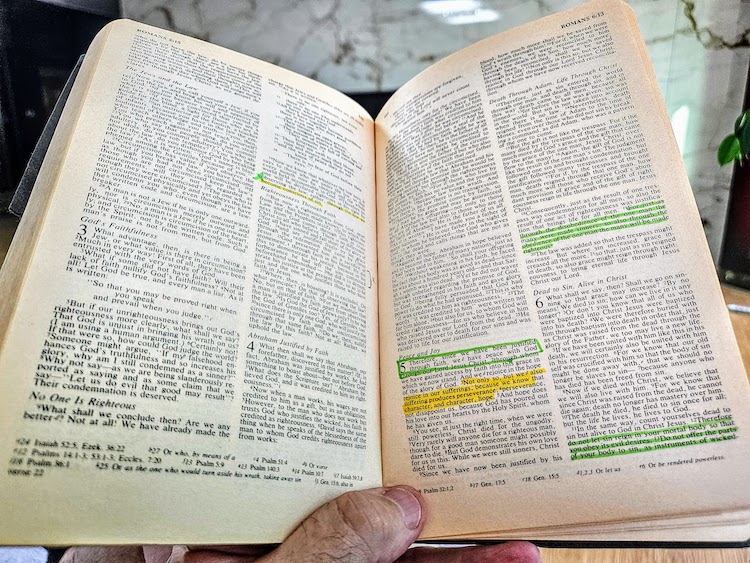
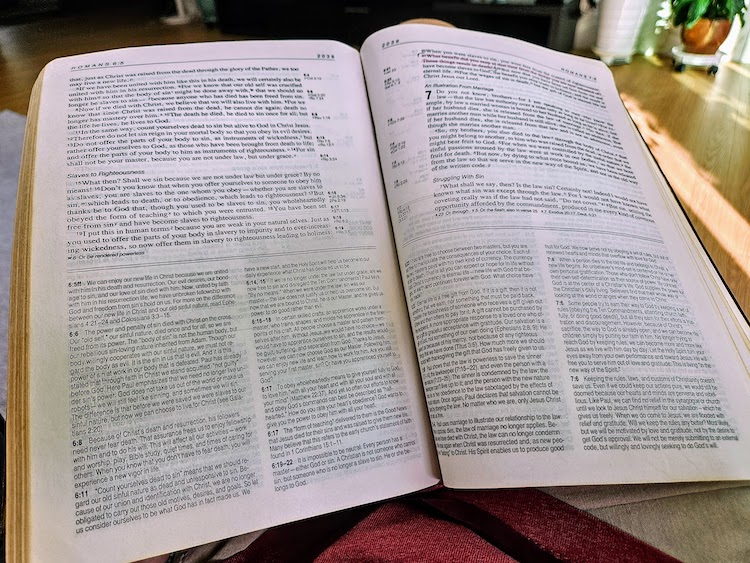
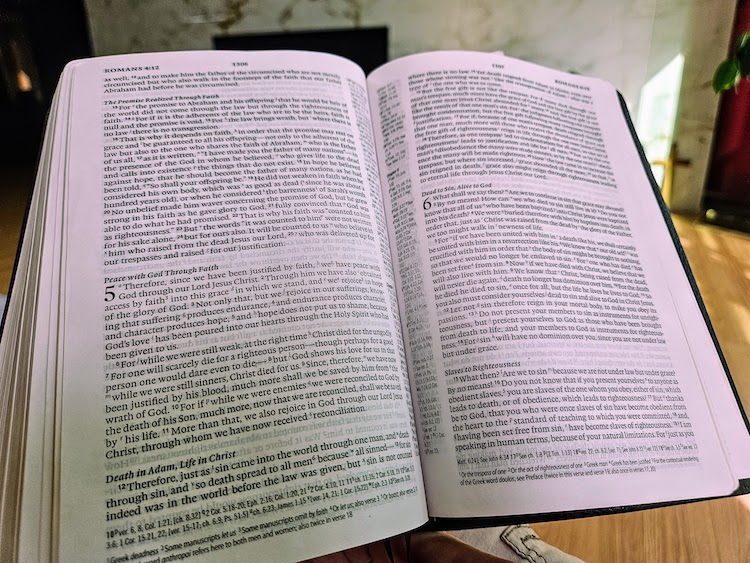
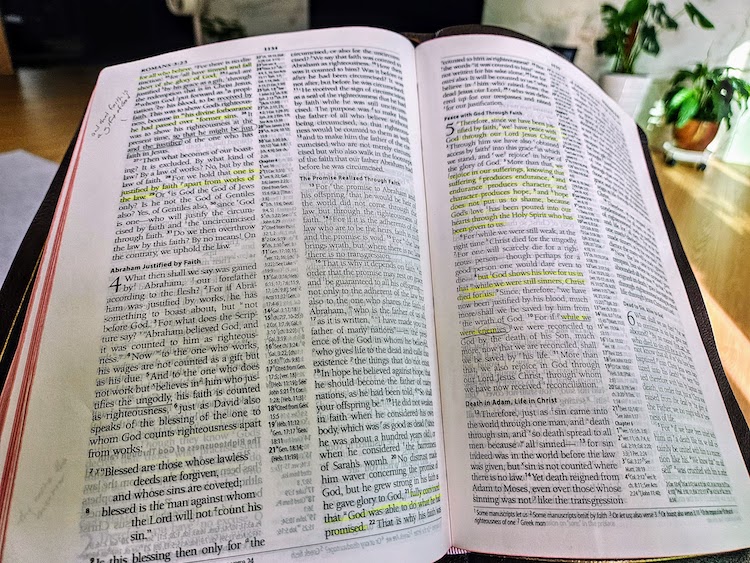
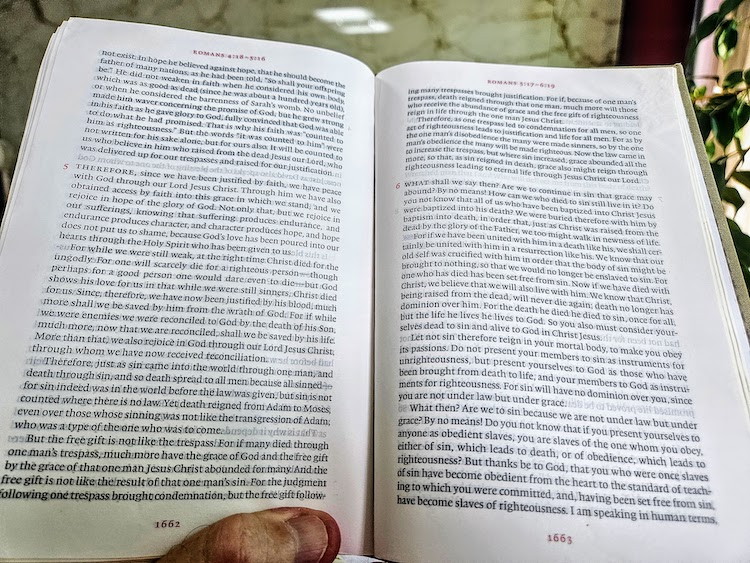
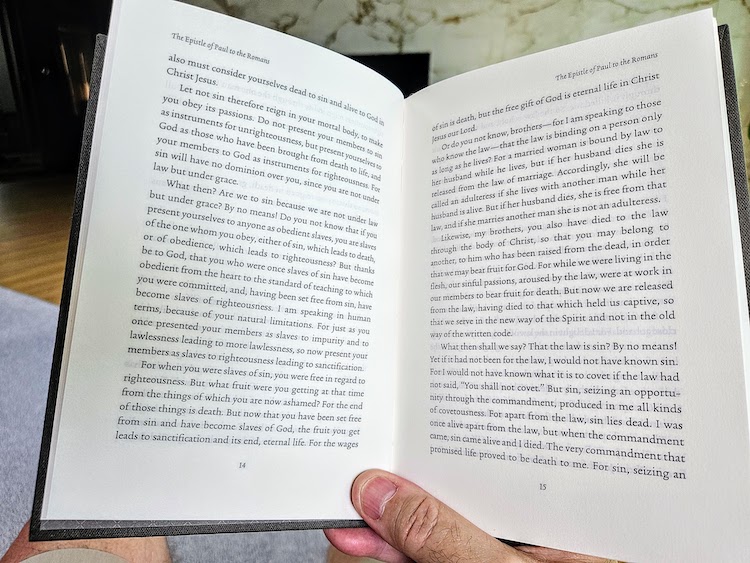

The single column ESV looks very readable. I read RSV (Catholic Edition). Your post sent me down a rabbit hole of translation comparisons. I have a copy of The Message as well. In spite of how it gets panned I find it useful. It may not illuminate God’s word, but it jump starts my brain so when I read RSV my brain is ready to go.
The Message is good, as is The Way (the one Mom and Dad gave me), which is like The Living Bible that Mom likes. They’re good especially if you understand that if you were to be looking into a deep theological point, you shouldn’t be using them, but if you just want to read for the general understanding, they work.
So I go by what I heard someone say once — “If I’m going to study the Bible, I use the ESV. If I want a commentary, I use the NIV,” i.e. the NIV is a “dynamic equivalence” translation — the translators expound upon what they believe the text is saying by writing it right into the translation. That’s where simple example of translating the Greek for “brothers” into “brothers and sisters” works, because we know that Paul wasn’t talking just to the men of the church. But a “literal equivalence” (ESV, NASB) would just go with “brothers” because people should be able to get what is really being said through the context. The NIV just takes it there for you. The Message pretty much takes it there for you and then some, putting it all into the hip language we cool cats speak today…